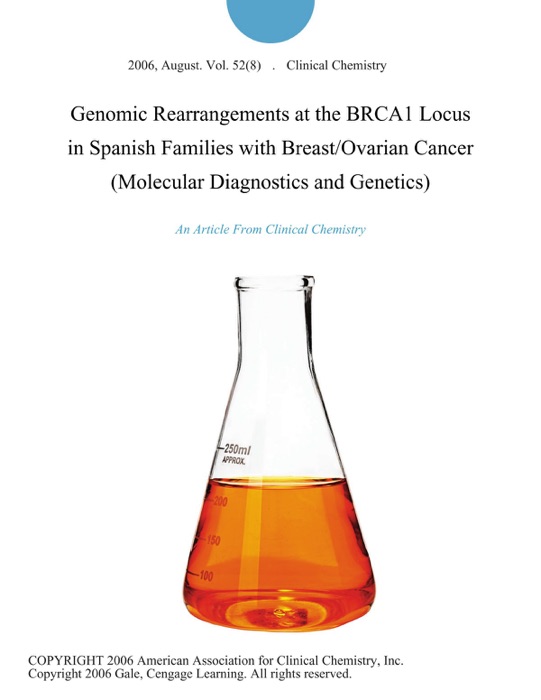(Download) "Genomic Rearrangements at the BRCA1 Locus in Spanish Families with Breast/Ovarian Cancer (Molecular Diagnostics and Genetics)" by Clinical Chemistry " eBook PDF Kindle ePub Free

eBook details
- Title: Genomic Rearrangements at the BRCA1 Locus in Spanish Families with Breast/Ovarian Cancer (Molecular Diagnostics and Genetics)
- Author : Clinical Chemistry
- Release Date : January 01, 2006
- Genre: Chemistry,Books,Science & Nature,
- Pages : * pages
- Size : 209 KB
Description
BRCA1 (OMIM No 113705) (9) was the first breast cancer susceptibility gene identified. Several studies have reported the presence of BRCA1 germ-line disease-causing changes, or variations, in breast/ovarian cancer families from different ethnicities and geographical areas of the world. The Spanish Consortium for Hereditary Breast and Ovarian Cancer performed a comprehensive analysis of BRCA1 germ-line variations in Spanish families with breast/ovarian cancer. As reported in many other populations, the highest frequency of variations was found in families with both breast and ovarian cancer cases (52.1%). The frequency was much lower in site-specific families with breast cancer (15.4%). Relevant findings of that study were the high proportion of variations that appear to be unique to Spaniards (42%) and the existence of recurrent variations associated with the geographical origin of the families (1). In all populations tested, the observed frequency of BRCA1 variations in high-risk breast/ovarian cancer families was consistently lower than predicted by linkage analysis (2). This finding suggests that methods for scanning variations fail to detect all BRCA1 germ-line defects. For instance, large genomic rearrangements (LGRs) (10) are not detectable by current PCR-based methods, perhaps explaining the discrepancy between linkage analysis and genetic testing. In support of this view, it has been proposed that the genetic structure of BRCA1, with numerous intragenic alu repeats (3) and 1 BRCA1 pseudogene 30 kb upstream (4)(5), might render this locus particularly prone to LGRs. Indeed, different studies have demonstrated the existence of germ-line LGRs involving either alu repeats (6)(7)(8)(9)(10) or the BRCA1 pseudogene(11). At least one LGR has been reported in which neither alu repeats nor the BRCA1 pseudogene were involved (12).